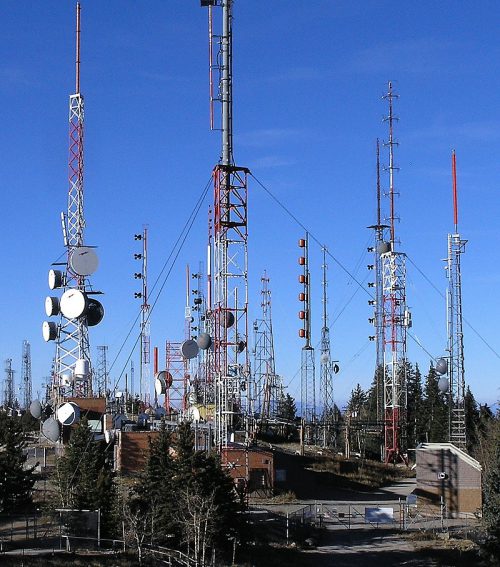In January 2020, China officially opened the world's largest radio telescope.
Called the Five-hundred-meter Aperture Spherical Telescope, or FAST, this massive dish has actually been scanning space since 2016. The impressive device is designed to receive radio waves—this is a type of electromagnetic radiation that belongs to the same spectrum as visible light, infrared light, and x-rays.
Radio waves are given off by all sorts of space objects, including stars, galaxies, and nebulas, so FAST is suited to discover and observe these things. They are also used by humans for communication. And many experts in the search for extraterrestrial intelligence (SETI) think that advanced alien civilizations would use them, too. That makes FAST a perfect SETI device!
Earlier this month, the scientists operating FAST claimed to have found just that—three sets of potential alien transmissions from planets far, far away. Even though the claims have since been proven false, this story worth talking about.
Let's dig into what we use radio waves for, why these claims weren't true, and why that's not a reason to give up on future discoveries.
What we use radio for

Radio towers are just one way that humans make use of radio waves. (Wikimedia Commons)
The radio waves found by these scientists are known as narrow-band radio waves. From messages sent between aircrafts and air control towers, to the music transmitted over the radio stations on FM and AM, humans send all sorts of information through radio waves. The discovery of radio transmission was one of the biggest tech breakthroughs in human history.
Narrow-band waves are useful because they can be focused on a particular frequency (or wavelength). This means that when a transmitter and a receiver are tuned to the same frequency, information can be successfully transmitted between the two sources.
Getting in the way

Past false alien transmitters, also known as microwave ovens. (Wikimedia Commons)
Let's get back to the claim of alien radio transmissions.
Since 2019, the scientists at FAST has been searching for alien transmissions. FAST is a powerful device, capable of making nearly 40 billion observations per second. It is also very sensitive—a device trying to read radio signals from millions of light years away would have to be!
The real problem is that humans make a lot radio wave chatter themselves. We've got radios and TVs and cellphones, satellites, and ... the list never ends. And all of these things can get in the way.
One infamous story about a group of potential 'alien signals' from 2011 and 2014 at the Parkes radio telescope turned out to be interference from scientists heating up their lunches in the microwave. Oops!
Learning on the job
The Parkes Radio Telescope in Australia has been operating since 1961. Years of upgrades have improved not only how it works but how the scientists who operate it read information. It's the only way to learn! (Getty Embed)
The truth is that searching for aliens is difficult work.
That's why even though other experts in SETI were quick to say that it was very unlikely that these FAST signals were made by aliens, they also understood that mistakes happen. Especially when FAST is such a new telescope.
In an interview with Live Science, SETI researcher Dan Werthimer said, "The big problem is that we're looking for signals from extraterrestrials, but what we find is a zillion signals from terrestrials (humans). ... signals from cell phones, television, radar, and satellites ... If you're kind of new in the game, and you don't know all these different ways that interference can get into your data and corrupt it, it's pretty easy to get excited [by a false signal]."
Keep on trying
Even with this false claim, the future of discovery for FAST is very bright. (Getty Embed)
This seems to be what has happened.
Even when they made the claims of possible alien transmissions, the scientists were cautious. "The possibility that the suspicious signal is some kind of radio interference is also very high, and it needs to be further confirmed and ruled out," said Zhang Tongjie, one of the lead scientists on the project.
Now everyone has agreed that these signals were just radio interference from sources here on Earth. It's a bit of a letdown, but it's also a part of the process of science.
The truth is that science is often 99.99% failure. But that 0.01% of true breakthrough? Well, just like the discovery of radio itself, when you make it, you can literally change the world.
So keep on searching SETI scientists. We're in your corner!
 That is one big telescope! The Five-hundred-meter Aperture Spherical Telescope. (ID 131715785 © Eastower | Dreamstime.com)
That is one big telescope! The Five-hundred-meter Aperture Spherical Telescope. (ID 131715785 © Eastower | Dreamstime.com)









